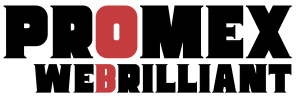Mastering Image Compression & Optimization: A Beginner’s Guide to Boosting Website Speed and SEO
In our digital world, images play a crucial role in conveying information and attracting attention. However, large image files can lead to slower web page load times and poor user experiences. This article will help you understand image compression and optimization, the key techniques to improve your images without compromising quality.
What is Image Compression?
Image compression is the process of reducing the file size of an image. This can be particularly important for web use, where faster load times can enhance user experience and improve search engine rankings.
Types of Image Compression
Lossy Compression:
- Reduces file size by permanently eliminating certain information, especially in complex areas of the image that the human eye is less likely to notice.
- Common formats: JPEG, WebP.
- Best for photographs and images where some quality loss is acceptable.
- Lossless Compression:
- Reduces file size without losing any image quality, allowing the original image to be reconstructed exactly.
- Common formats: PNG, GIF, TIFF.
- Ideal for images with sharp edges, text, and graphics.
Why Optimize Images?
Optimizing images involves fine-tuning file size and quality to achieve the best possible performance for web use. Here are some reasons why this is essential:
- Faster Load Times: Smaller images load quickly, improving the overall speed of your website.
- Better User Experience: A speedy site keeps visitors engaged and reduces bounce rates.
- Improved SEO: Search engines like Google factor in page speed as a ranking factor.
- Reduced Bandwidth Costs: For sites with heavy traffic, smaller images can significantly reduce bandwidth usage.
Best Practices for Image Compression & Optimization
1. Choose the Right Format
- JPEG: Best for photos and images with gradients.
- PNG: Suitable for graphics with transparency and less complex images.
- GIF: Great for animations and simple graphics.
- WebP: A modern format that provides lossy and lossless compression with better quality-to-size ratios but requires some browsers to ensure compatibility.
2. Use Image Compression Tools
Several tools and software can help you compress images effectively:
- Online Tools: TinyPNG, CompressJPEG, and ImageOptim.
- Desktop Software: Adobe Photoshop (Save for Web), GIMP, or Affinity Photo.
- Plugins for CMS: If you use WordPress, consider plugins like Smush or EWWW Image Optimizer for automated compression.
3. Resize Images Appropriately
- Always resize images to meet the specific dimensions required for your webpage.
- Avoid uploading high-resolution images if they will only be displayed at smaller sizes.
4. Optimize Image Metadata
- Strip unnecessary metadata from images, such as camera settings or GPS coordinates, to further reduce file size.
5. Use Responsive Images
- Implement the
srcsetandsizesattributes in your HTML to serve different image sizes based on the user’s device. - This ensures faster loading times on smaller devices and saves bandwidth.
6. Test Before and After
- Utilize tools like Google PageSpeed Insights or GTmetrix to analyze your site before and after image optimization.
- This will help you measure performance improvements and ensure that quality remains acceptable.
Conclusion
Image compression and optimization are essential practices for anyone looking to enhance their website’s performance. By understanding different compression methods and following best practices, you can significantly improve load times, user experience, and SEO rankings.
If you are looking for expert help in optimizing your images and ensuring your website performs at its best, consider reaching out to professionals. For personalized assistance and support, visit https://promex.me/contact. Your website deserves the best performance possible!
